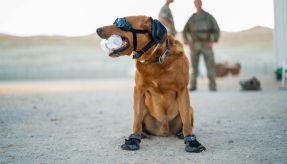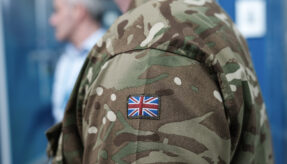
After extensive testing, the new Virtus body armour system is now rolling out to infantry troops.
The new personal armour uses the latest materials and offers the same protection as the Osprey system but is significantly lighter, moves with the body more easily and produces a slimmer profile.
The Virtus system has been tested by soldiers from the Royal Engineers, Royal Artillery, Yorkshire Regiment, Rifles, Parachute Regiment and Mercian Regiment as well as the Royal Marines, with troops providing feedback on all design elements. The experiences of troops who served in Iraq and Afghanistan have also helped to design the new armour.
The level of protection employed can be scaled up or down to match the type of threat by adding or removing soft armour pads and hard ballistic plates. As well as protection, the new body armour is designed to aid loadcarriage, with even distribution of weight and reduced bulkiness. Troops operating in Afghanistan were carrying average loads that reached around 56kg.
Virtus is 4.7kg lighter than Osprey and will become lighter still once new armour plates, which are in development, are introduced. The new system also has a quickrelease mechanism – a pin positioned on the chest that when pulled releases the entire body kit – to aid safe extraction from hazardous situations such as burning vehicles or water. This replaces the Velcro straps that soldiers currently have to rip open to release their body armour. A new, lighter helmet will provide increased blunt impact protection, face and mandible guards for certain roles and a shape that is designed to work with the armour and daysack so weapons can be comfortably used even in a prone position.
Lt Col Rob O’Connor (Yorks), commanding officer of the Infantry Trials and Development Unit, said: “Commanders can select a level of armour using a combination that they think is sufficient for the situation. This allows them to scale back the amount of protection in favour of agility if they want.”
Army Body Armour Equipment Field equipment Infantry Mercian Regiment Parachute Regiment Rifles Royal Artillery Royal Engineers Royal Marines Virtus Body Armour Yorkshire Regiment








